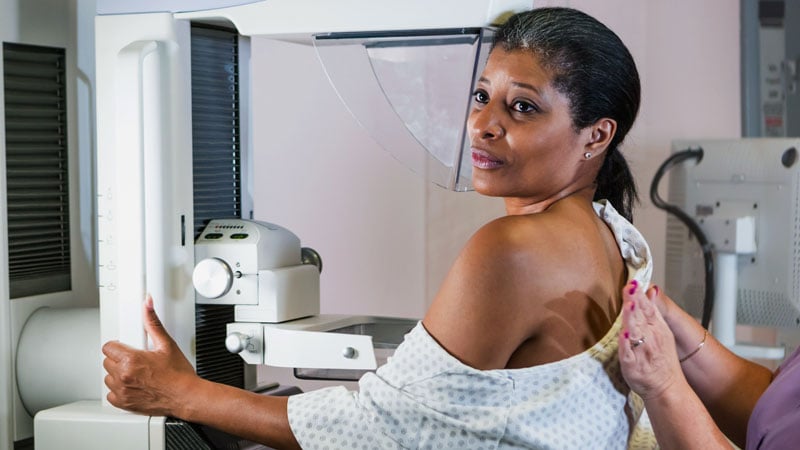Core Concepts
USPSTF recommends starting mammography at age 40 for all women.
Abstract
The US Preventive Services Task Force (USPSTF) released a draft recommendation statement proposing to start routine screening mammograms at age 40 instead of age 50. The change aims to save more lives, especially among Black women. The American Cancer Society supports the draft, but some experts question the blanket recommendation. The American College of Radiology already recommends yearly mammograms from age 40 for average-risk women. The draft also highlights gaps in knowledge about mammography's effectiveness, particularly for Black women, older women, and those with dense breasts or DCIS. The task force is open to public comments until June 5.
New USPSTF Draft Suggests Mammography Start at 40, Not 50
Stats
The latest recommendation suggests starting routine screening mammograms at age 40.
Screening every other year starting at age 40 has the potential to save about 20% more lives.
Nearly half of all women have dense breasts, increasing their risk for breast cancer.
Quotes
"I don't see the evidence that would suggest that all women should be starting at the same age." - Diana Zuckerman, PhD
"If we can find that monitoring them carefully... is just as effective... then I think we could help to de-escalate treatment for this very low-risk group of patients." - Shelley Hwang, MD, MPH
Key Insights Distilled From
by Kerry Dooley... at www.medscape.com 05-09-2023
https://www.medscape.com/viewarticle/991738
Deeper Inquiries
How might the new USPSTF recommendations impact insurance coverage for mammograms?
The new USPSTF recommendations, if finalized, could potentially lead to improved insurance coverage for mammograms. Typically, when the USPSTF upgrades a recommendation from a C grade to a B grade, it often results in better access and insurance coverage for patients. The Affordable Care Act (ACA) mandates that services receiving A and B grades from the USPSTF must be covered by insurers without copays, aiming to promote the use of highly regarded services. However, it's important to note that the USPSTF's recommendation is solely based on the scientific evidence of what works to prevent breast cancer, and coverage decisions involve considerations beyond just clinical benefit. Ultimately, decisions regarding insurance coverage are the responsibility of payors, regulators, and legislators.
Is there a risk of overdiagnosis and overtreatment for breast lesions with earlier screening?
There is a potential risk of overdiagnosis and overtreatment for breast lesions with earlier screening, especially in the context of mammography. Overdiagnosis occurs when screening detects abnormalities that may never cause symptoms or harm, leading to unnecessary treatments. Overtreatment refers to the unnecessary treatment of conditions that may not have caused harm if left untreated. With earlier screening, there is a possibility of detecting lesions, such as ductal carcinoma in situ (DCIS), that may not progress to invasive cancer or cause harm. This raises concerns about the need for more research to address approaches to reduce the risk of overdiagnosis and overtreatment, particularly for low-risk groups of patients.
How can the medical community address the gaps in knowledge about mammography's effectiveness for different groups of women?
To address the gaps in knowledge about mammography's effectiveness for different groups of women, the medical community can take several steps. Firstly, conducting more research specifically focused on populations that have been historically underrepresented in studies, such as Black women, older women, and those with dense breasts, is crucial. This research should aim to understand the underlying causes of elevated breast cancer mortality rates among Black women and assess the effectiveness of screening methods for different demographic groups. Additionally, promoting awareness and education among healthcare providers about the nuances of breast cancer screening in diverse populations can help tailor screening recommendations based on individual risk factors. Collaborative efforts between researchers, healthcare providers, and advocacy groups can also facilitate the development of more personalized and effective screening strategies for women of varying backgrounds and risk profiles.
0
More on Healthcare
